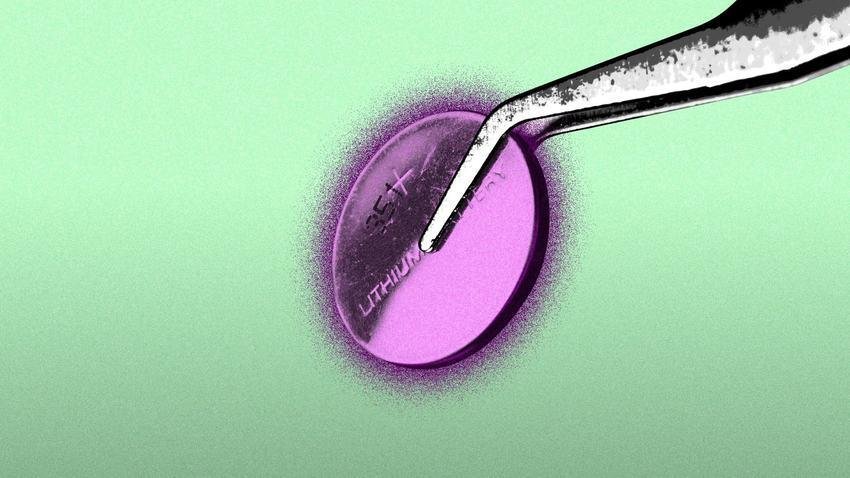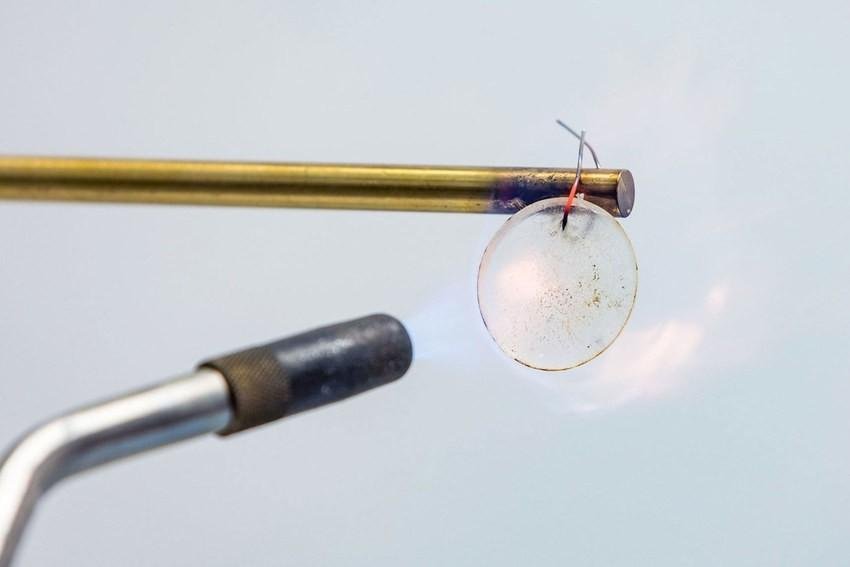This lithium-ion battery can be cut, bent, immersed in water, shot, burned and still operating normally.

The lithium-ion battery has shaped the modern world. It is at the heart of most rechargeable electronics, from cell phones and laptops to lenses and electric cars. Although they have a high energy density, they also have many problems. They use toxic and flammable materials with the consequence that the smallest defect is turn your gadgert into an explosive machine.
A team of researchers led by the physics department of the Johns Hopkins Laboratory of Applied Physics worked to create a safer battery and after research developed a lithium-ion battery that appears to be indestructible.
The idea first started in 2017, in collaboration with researchers at the University of Maryland, who managed to build a battery that could be cut, shot, bent and wet without interrupting the power supply. At the end of 2019, Johns Hopkins's team took it one step further, making it fireproof and boosting its trend to levels comparable to a commercial product.
As he says Konstantinos Gerasopoulos, the head of research, the secret to creating an indestructible battery lies in the electrolyte, which consists of a mixture of lithium salts and a soft plastic material that will not catch fire or explode.
Most lithium ion electrolytes are a mixture of flammable lithium salts and toxic liquids, which means you have a recipe for destruction. If the permeable barrier separating the cathode from the anode fails, then it creates a short circuit that releases too much heat. When all this heat hits a highly flammable material like lithium ion electrolyte with the oxygen-rich cathode of the battery, you have it in your hands a flammable electronic device.
What Mr. Konstantinos Gerasopoulos and his team gave us is that by increasing the concentration of lithium salts and mixing the electrolyte with a polymer (a material that looks like a very soft plastic) it could provide a potential difference from about 1,2 volts up to 4 volts, so it can become a commercial product.
The new battery is flexible as a contact lens, non-toxic and non-flammable, and can be manufactured and operated in the air without a case. Beyond that, it can withstand almost any kind of abuse.

During the tests, which you can watch here, the APL team submerged the battery in seawater, cut it with scissors, blasted it with air to simulate a ballistic impact, and set it on fire. After each essay, the battery continued to provide electricity. After the fire test, the granular part was cut and continued to operate normally for 100 hours.
The researchers of the new battery are already in talks with manufacturers, who say they could incorporate the new chemistry and agent formattings, in existing lithium ion production facilities, without too much difficulty. As they report, the new battery could be on the market within two years.
Because it is flexible, it could be incorporated into wearable electronics and even directly into clothing fibers. Its durability is suitable for many military and scientific applications, such as this onename underwater vehicles, aircraft and satellites.
There are still some technical obstacles that need to be overcome, such as increasing the number of charge cycles. A typical smartphone battery can be charged more than 1.000 times, but this battery starts to lose efficiency after just 100 cycles.





